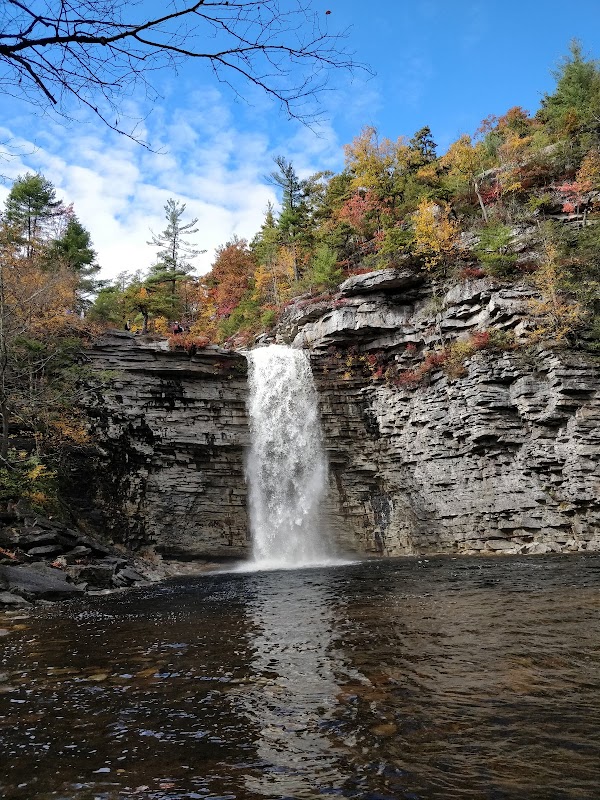
Joining Forces: Community Cleanup and Restoration Days in Marine Park, New York
Marine Park’s Community Cleanup and Restoration Days offer hands-on opportunities to restore New York’s largest public park. Join locals in practical, nature-driven work that supports the park’s diverse ecosystems while enjoying an accessible outdoor adventure.
Wear Sturdy Footwear
The terrain ranges from soft forest floor to muddy patches in salt marsh areas. Shoes with good traction protect your feet and provide stable footing during restoration work.
Bring Reusable Water
Hydration is key during physical activity. A refillable water bottle supports both your health and the park’s eco-friendly values by reducing single-use plastic.
Dress for Protection
Long sleeves, hats, and insect repellent guard against sun exposure and biting insects common near wetlands in warmer months.
Arrive Early
Cleanup events start in the morning to avoid midday heat and maximize productivity as wildlife becomes active and tides ebb and flow.
Joining Forces: Community Cleanup and Restoration Days in Marine Park, New York
Marine Park in Brooklyn stands as a stubborn patch of wilderness within the city—an ecosystem fiercely itself, pushing back against urban sprawl with salt marshes that ripple with every coastal breeze and woodlands that stretch quietly, inviting interaction. Community Cleanup and Restoration Days here are more than volunteer chores; they’re a tactile chance to engage with a landscape that asks for respect and care.
The park’s roughly 530 acres offer winding trails with modest elevation changes mostly under 50 feet, threading through tidal wetlands, upland forests, and historic salt marshes. Each step carries a whisper of the park’s layered identity—from tidal waters daring you to notice them, to oaks standing patient through decades. Restoration volunteers walk alongside this robust nature, clearing invasive species like phragmites and litter that dulls the clarity of the creeks. You’re out there not just witnessing but actively helping the park reset its natural rhythms.
Cleanup days are practical but never mundane. Expect to cover about 2 to 3 miles depending on your task area, on soft, sometimes muddy terrain that demands sturdy footwear. Gloves, trash bags, and pruning shears are standard tools—though organizers provide most gear, bringing a reusable water bottle is crucial; hydration is the quiet backbone of all physical effort here. Morning events are ideal for avoiding midday heat and watching the park come alive with bird calls and shifting tides.
The experience stretches beyond raking and hauling—it’s about reading the land, recognizing how the salt marsh breathes with the tides, and how the forest edges buffer the city’s bustle. Each cleanup action pushes back against environmental decline, layering small wins into a larger survival effort.
Getting there is straightforward: Marine Park is accessible via bus and subway routes, with ample parking surrounding the park’s main entrances. Dress for movement—a hat and lightweight long sleeves guard against sun and insects, while closed-toe shoes with traction protect against slick mud.
For anyone seeking a hands-on outdoor mission, Community Cleanup and Restoration Days deliver a blend of manageable physical activity, immersive environmental education, and a tangible sense of accomplishment. Here, you don’t just see nature; you become part of its perseverance, pitch in with its repair, and step away knowing you’ve helped the park stay fiercely itself—ready for its next tide, its next generation of visitors.
Nearby Trips
All Adventures
Boat Charters
Water Activities
Adventures near Marine Park, New York
Discover the unique and memorable adventures that make Marine Park, New York special.
Frequently Asked Questions
How do I sign up for a Community Cleanup and Restoration Day?
Events are typically organized by the Marine Park Alliance or local environmental groups. You can sign up on their websites or through community bulletin boards. Registration is often free but may require advance notice.
Are these cleanup events suitable for families with children?
Yes, most restoration days welcome families. Tasks can be adjusted for younger participants, allowing children to engage in simple activities like picking up litter or planting native species.
What wildlife might I see during cleanup days?
Expect to encounter great blue herons, red-winged blackbirds, and snapping turtles. Early morning hours increase chances of spotting deer or foxes in quieter park areas.
Is previous experience with restoration or environmental work necessary?
No prior experience is required. Volunteers receive guidance on tool use and plant identification, making the events accessible to beginners and experts alike.
What environmental impact do the cleanup and restoration days have?
Removing invasive plants and litter helps native species thrive and preserves water quality in the park’s salt marsh. The collective effort slows habitat degradation and encourages biodiversity.
Where are some lesser-known spots within Marine Park to explore after a cleanup day?
Check out the Salt Marsh Preserve Trail for quieter observation points or visit the Muttontown Hill overlook for an unexpected woodland clearing that offers serene views distinct from the busy main paths.
Recommended Gear
Work Gloves
Protect your hands from thorns, debris, and dirt while handling trash and invasive plants.
Water Bottle
Staying hydrated is critical; bring a reusable bottle to reduce waste and keep up energy.
Closed-Toe Shoes
Shoes with good tread protect your feet from mud and uneven ground.
Sun Hat
Shield your face and neck from sun exposure during long outdoor sessions.
Local Insights
Hidden Gems
- "Salt Marsh Preserve Trail with unique marsh edge habitats"
- "Muttontown Hill clearing, a rare open canopy spot"
- "Quiet pockets along the Paerdegat Basin shorelines"
Wildlife
- "Great blue heron"
- "Diamondback terrapin"
- "Northern water snake"
- "Red-tailed hawk"
History
"Originally tidal wetlands protected by Native Americans and 17th-century settlers, Marine Park has transitioned from farmland to protected natural preserve, retaining culturally significant salt marsh landscapes."
